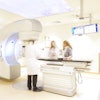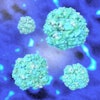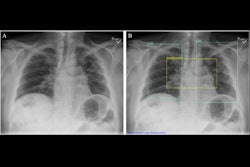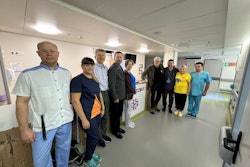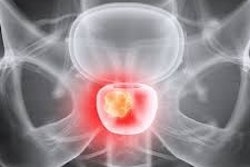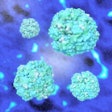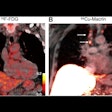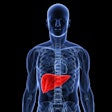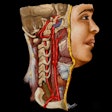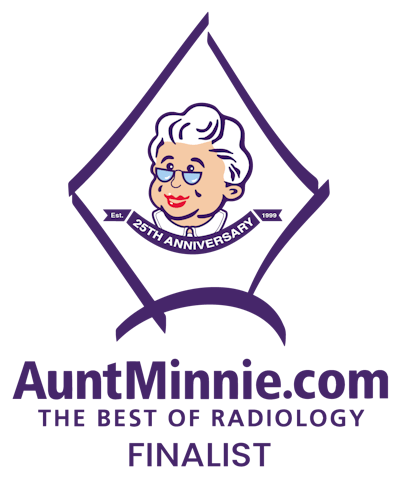
Who made it to the final round in the 2024 edition of the Minnies, AuntMinnie.com's event recognizing excellence in radiology? See below to find out who our expert panelists selected as the final candidates in this year's event.
The Minnies finalists were drawn from over 200 candidates across 15 categories. You can also view a full list of candidates based on nominations from our members.
In the next round of voting, our expert panel will vote on the finalists, with winners announced in November.
Most Influential Radiology Researcher
Erik Middlebrooks, MD, Mayo Clinic, Jacksonville, FL
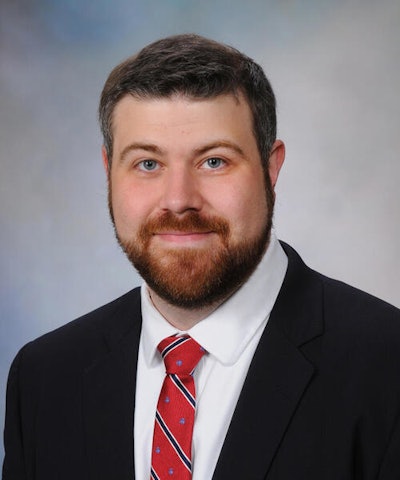 Erik Middlebrooks, MD.
Erik Middlebrooks, MD.
One of this year's nominations for Most Influential Radiology Researcher is Erik Middlebrooks, MD, of the Mayo Clinic in Jacksonville, FL. His research interests include using structural and functional MRI -- particularly ultrahigh-field, 7-tesla MRI -- to map brain microstructure and develop neurosurgical treatment of brain tumors, epilepsy, and neurodegenerative and movement disorders such as Parkinson's disease, essential tremor, and dystonia.
Middlebrooks is associate chair of the Mayo Clinic's research and innovation division in its department of radiology, as well as senior editor of the American Journal of Neuroradiology and president of the Southeastern Neuroradiological Society. He earned his medical degree at the University of Alabama School of Medicine and completed a residency in diagnostic radiology at the University of Florida.
He has worked hard to redefine how clinicians set targets for deep brain stimulation surgery and to expand the uses of 7-tesla MRI to new areas such as Parkinson's disease.
"7-tesla MRI gets us closer in imaging to our pathology colleagues, and offers many new possibilities for better treatment," he said. "But we're still just scratching the surface."
In his lab, he has created a team that brings experience to the research across a variety of domains, from MRI scientists and technologists to neurology and surgery experts. Going forward, Middlebrooks plans to apply his skills to the further development of AI for image reconstruction.
"There's a huge role for AI in image acquisition," he said.
Perry Pickhardt, MD, University of Wisconsin -- Madison
Turning up in the category of Most Influential Radiology Researcher isn't new for Perry Pickhardt, MD -- he won the category last year and in 2016.
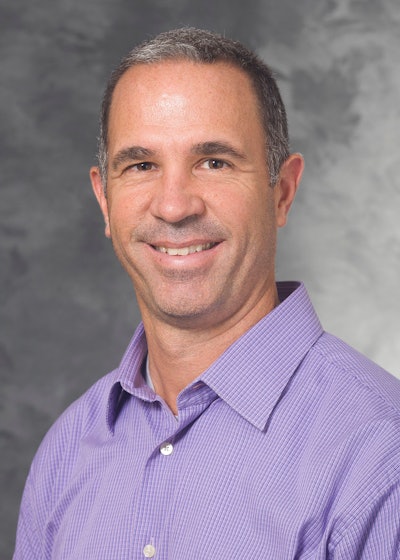 Perry Pickhardt, MD.
Perry Pickhardt, MD.
Pickhardt serves as chief of gastrointestinal imaging at the University of Wisconsin in Madison and is medical director of oncological imaging at the UW Carbone Cancer Center. He earned his medical degree in 1995 from the University of Michigan and completed a residency in diagnostic radiology at the Mallinckrodt Institute of Radiology at Washington University in St. Louis. He served in the U.S. Navy and while there, organized a large CT screening trial at the National Naval Medical Center in Maryland that evaluated CT colonography. He has written on abdominal imaging in more than 500 scientific publications, book chapters, and textbooks.
His current research "edge" is the prospect of using body composition data embedded within CT scans to provide for accurate phenotypic biological aging. In any case, for Pickhardt, research is key to providing high-quality patient care.
"I love how research improves my clinical acumen and 'moves the needle' for patient care," he said.
Most Effective Radiology Educator
Francis Deng, MD, Johns Hopkins Medicine
 Francis Deng, MD.
Francis Deng, MD.
An assistant professor of radiology and radiological science, Francis Deng, MD, is the Johns Hopkins radiology department's co-director of medical student diagnostic radiology electives. His area of expertise is neuroradiology, with a special emphasis on diagnostic imaging of the head, neck, brain, and spine. He earned his medical degree from Washington University in St. Louis School of Medicine and completed his residency and a neuroradiology fellowship at Massachusetts General Hospital in Boston.
Deng is lauded internationally as an educator. He has contributed chapters to textbooks such as First Aid for the USMLE Step 1 and Core Radiology: A Visual Approach to Diagnostic Imaging and is an editor at Radiopaedia.org. He co-directs the brain and spine neuroradiology fellowship certificate and is on the faculty for the stroke imaging fellowship certificate for Medality (formerly known as MRI Online). He hosts a podcast called Diagnostic Excellence and Error for the American Journal of Roentgenology; topics have included diagnostic stewardship, understanding diagnostic errors, mitigating misses and misinterpretations, and perceptual and interpretive error in diagnostic radiology. Last year, he was awarded a grant through the American Roentgen Ray Society's (ARRS) clinician educator development program.
Elliot Fishman, MD, Johns Hopkins Medicine
The second finalist is Elliot Fishman, MD, a category for which he took the trophy in 2001, 2007, 2014, and 2017. He's also won the award five times under the Best Educational Mobile App category (2023, 2020, 2019, 2017, and 2016), once for Most Influential Radiology Researcher (2004), and once under the category of Best Radiology Image (2017).
 Elliot Fishman, MD.
Elliot Fishman, MD.
He joined the faculty at Johns Hopkins University in 1981 and is currently a professor of radiology and radiological science, director of diagnostic imaging and body CT, and a member of the Johns Hopkins Kimmel Cancer Center. In the 1980s, he worked in 3D imaging with Pixar Animation Studios; he owns and runs an educational website called Ctisus, and the Ctisus family of mobile apps has earned five Minnies for Best Educational Mobile App. In 2018 he received an endowed professorship from the university.
He has published more than 1,000 articles, is the author or co-author of 10 textbooks, and member of editorial boards for more than 35 journals. His research interests include 3D medical visualization, cardiac imaging, multidetector computed tomography/CT angiography development, oncologic imaging, and Wed-based education and training.
For Fishman, being an educator is not only about offering expertise to trainees or to his radiologist peers but also continuing to be an active learner himself. A few of his educational activities include weekly case conferences with faculty members and lectures tailored to specific audiences such as radiologists in private practice.
"You get to meet a lot of people as a radiology educator, and when you teach you learn about the topic too," he said. "Being an educator forces me not to rest on my laurels but to keep moving forward."
Most Effective Radiologic Sciences Educator
Colleen Dempsey, EdD, Thomas Jefferson University, Philadelphia, PA
 Colleen Dempsey, EdD.
Colleen Dempsey, EdD.
Colleen Dempsey, EdD, of Thomas Jefferson University is hoping to take home her second Minnie for Most Effective Radiologic Sciences Educator.
She currently serves as chair of the department of medical imaging and radiation sciences in the College of Health Professions at TJU and directs the radiography and invasive cardiovascular technology programs. Dempsey has been honored many times for her work in TJU's radiologic sciences training program, including the 2017 Minnie for Most Effective Radiologic Sciences Educator.
For the past five years, she has worked with an interprofessional team of faculty and students from Jefferson to participate in a local community “Mayor’s Wellness Day” event. It is an opportunity to share with the community all about the medical imaging and radiation sciences profession while educating about ultraviolet radiation, Dempsey said.
Logging 19 years in the profession, Dempsey received her doctorate in education from Gwynedd Mercy University in Gwynedd Valley, PA, with a focus on higher education leadership. She is a registered technologist in radiography and received her radiologic technology degree from Drexel University in Philadelphia. She enjoys teaching in the classroom and being involved with her local and national professional organizations.
Dempsey began working in radiography at Mercy Fitzgerald Hospital in Darby, Pennsylvania. She told AuntMinnie she feels fortunate to have worked in and gained experience in interventional radiology, the operating room, emergency department, and inpatient and outpatient radiology. She continued working at the hospital for 12 years while growing in her role as an educator.
Eight years ago, Dempsey moved into the role of director of the radiography program, and five years ago she accepted the role as chair of the Department of Medical Imaging and Radiation Sciences at TJU. Her department currently serves 109 students who are studying in one of the university's nine concentration options.
Kori Stewart, PhD, Quinnipiac University, Hamden, CT
Kori Stewart, PhD, returns this year as a Minnies finalist. She has been a dedicated educator and radiologic technologist since 2009.
 Kori Stewart, PhD.
Kori Stewart, PhD.
Stewart currently serves as associate professor of diagnostic imaging, and program director of radiologic sciences at Quinnipiac University. Her research focuses on predictive modeling in AI, clinical decision support, medical image processing, and clinical problem-solving and decision-making.
Appointed to her current role in August 2022, Stewart spent over 12 years in higher education as a part-time adjunct professor and full-time faculty at both the clinical assistant professor and clinical associate professor levels. She's also served as clinical director of CT, MRI, and ultrasound, and she was program director of radiologic technology and director of training for the Society for Imaging Informatics in Medicine (SIIM).
According to her peers, Stewart provides an interactive environment with hands-on activities and innovative instruction that includes emerging and relevant health and imaging informatics applications.
No doubt Stewart has excelled in her academic and administrative functions across the radiologic and imaging sciences and imaging informatics. The work has led to her current tenure-track appointment.
Most notably, Stewart was elected president of the Association of Educators in Imaging and Radiologic Sciences board of directors after having served as president-elect and secretary/treasurer. She is also a site visitor for the Joint Review Committee on Education of Radiologic Technologists and education chapter delegate and member of the editorial review board (ERB) for the American Society of Radiologic Technologists (ASRT).
Last but not least, Stewart is an accomplished author and co-author of radiologic and imaging science program textbooks, her latest are the eighth edition of “Introduction to Radiologic & Imaging Sciences & Patient Care” and the upcoming seventh edition of “Principles of Radiographic Imaging: An Art and Science.” Stewart is also co-author of the upcoming first edition of "Imaging Informatics: An Introduction" and the sole author of an Informatics in Medical Imaging chapter in the sixth edition of the textbook “Principles of Radiographic Imaging: An Art and Science."
Stewart earned her doctorate in biomedical (health) informatics from Rutgers University with a focus on clinical informatics. She remains current in her licensure and certification requirements as a radiologic technologist (since 2009) and imaging informatics professional (since 2016) by regularly participating in continuing education and professional development.
Most Effective Radiology Administrator/Manager
Dmitry Beyder, Barnes-Jewish Hospital/Washington University, St. Louis, MO
A first-time Minnies finalist, Dmitry Beyder exemplifies how the role of the nuclear medicine technologist can evolve.
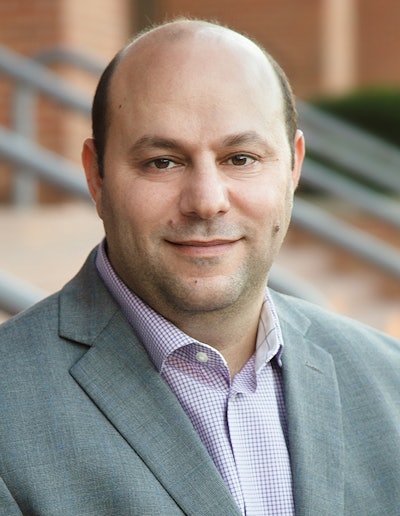 Dmitry Beyder.
Dmitry Beyder.
Once a nuclear medicine technologist at Memorial Sloan-Kettering Cancer Center in New York and then clinical supervisor of nuclear medicine and PET at Oregon Health and Science University in Portland, Beyder now serves as theranostics practice administrator at Barnes-Jewish Hospital (BJH)/Washington University (WU) in St. Louis, MO.
Beyder played a key role in launching the radiopharmaceutical therapy (RPT) comprehensive center of excellence at WU, BJH, and Siteman Cancer Center last year. This joint theranostics program provides a full range of theranostic services, including diagnostic imaging, consultation, radiopharmaceutical infusions for both clinical and research treatments, and follow-up evaluations.
A distinguished radiology program manager of nuclear medicine, PET, CT, and patient transport at BJH Mallinckrodt Institute of Radiology, Beyder was also elected as the 2023-2024 president for the Society of Nuclear Medicine and Molecular Imaging Technologist Section (SNMMI-TS).
“This is an amazing time to represent nuclear medicine technologists globally, with opportunities to increase the technologist’s role in providing theranostics and nuclear medicine therapy to cancer patients in need of targeted, highly efficient treatments and to grow our profession with both representation and development,” Beyder said at the time of his SNMMI-TS election.
Beyder received his Bachelor of Science degree in nuclear medicine technology from the State University of New York at Buffalo in 2003. He then received his master's degree in public administration, with a focus on health policy, management, and international healthcare, from the New York University Robert F. Wagner Graduate School of Public Service in New York, NY.
Beyder has received several awards throughout his career, including the SNMMI-TS 2021 Advocate of the Year Award and the SNMMI-TS 2016 and 2017 President’s Distinguished Service Awards. At BJH, Beyder guided his clinical teams toward a 5-star patient experience award and quality and safety awards. He has become a published journal author and participated in at least 26 invited speaker presentations.
Ashley Darby, University of Mississippi Medical Center and Children's of Mississippi, Jackson, MS
Ashley Darby directs imaging services for the University of Mississippi Medical Center (UMMC) and Children's of Mississippi in Jackson, MS.
 Ashley Darby.
Ashley Darby.
With over two decades of experience in the field of radiology, Darby has developed a comprehensive clinical background that includes diagnostic radiology, CT, general ultrasound, and vascular ultrasound. Darby's journey has taken her through various healthcare settings, from small critical access hospitals in rural Mississippi and Alabama to the largest academic, level 1 trauma center and only children’s hospital in Mississippi where she currently serves.
Darby's role allows her to engage in research, education, and clinical care. UMMC Health System, which includes multiple hospitals and campuses, maintains an overall bed capacity of 864 and an annual radiology procedure volume of more than 330,000, she said.
However, over the past three years, UMMC and Children's of Mississippi have faced staffing challenges due to the pandemic, to which Darby and her team have responded with innovative recruitment efforts. The work has resulted in vacancy and turnover rates significantly decreasing by 64% and 60%, respectively. However, this is just a glimpse of how radiology services are changing on University of Mississippi campuses and affiliated hospitals.
A certified Six Sigma Green Belt, Darby is affiliated with the Mississippi Chapter of the American College of Healthcare Executives. She holds a master's degree in business administration specializing in project management, and a master's degree in health administration, both obtained from Louisiana State University Shreveport.
Darby is also an active member of several organizational committees, including the UMMC Human Resources Advisory Council, Healthcare Workplace Violence Committee, Healthcare Compliance Management Committee, Children's Information Technology Committee, and Children's Ambulatory Safety Team. In addition, she participates in the Epic Clinical Oversight Committee, co-chairs the Procedural Value Analysis Committee, and serves on advisory committees for the radiologic sciences bachelor and nuclear medicine technology master programs in the School of Health-Related Professions (SHRP).
Nominated for a Minnies award last year also, Darby is currently enrolled in the Doctor of Health Administration program at the UMMC SHRP.
